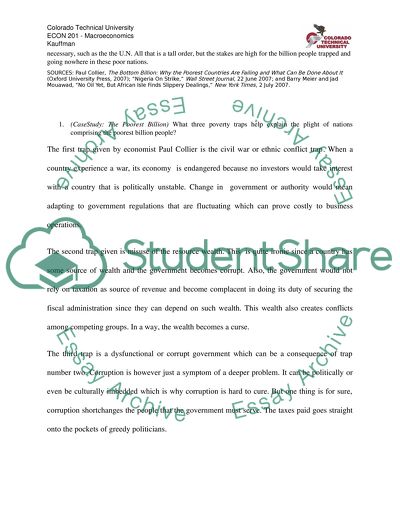The Poorest Billion People Case Study Example | Topics and Well Written Essays - 953 words. Retrieved from https://studentshare.org/macro-microeconomics/1563591-macroeconomicscase5
The Poorest Billion People Case Study Example | Topics and Well Written Essays - 953 Words. https://studentshare.org/macro-microeconomics/1563591-macroeconomicscase5.


